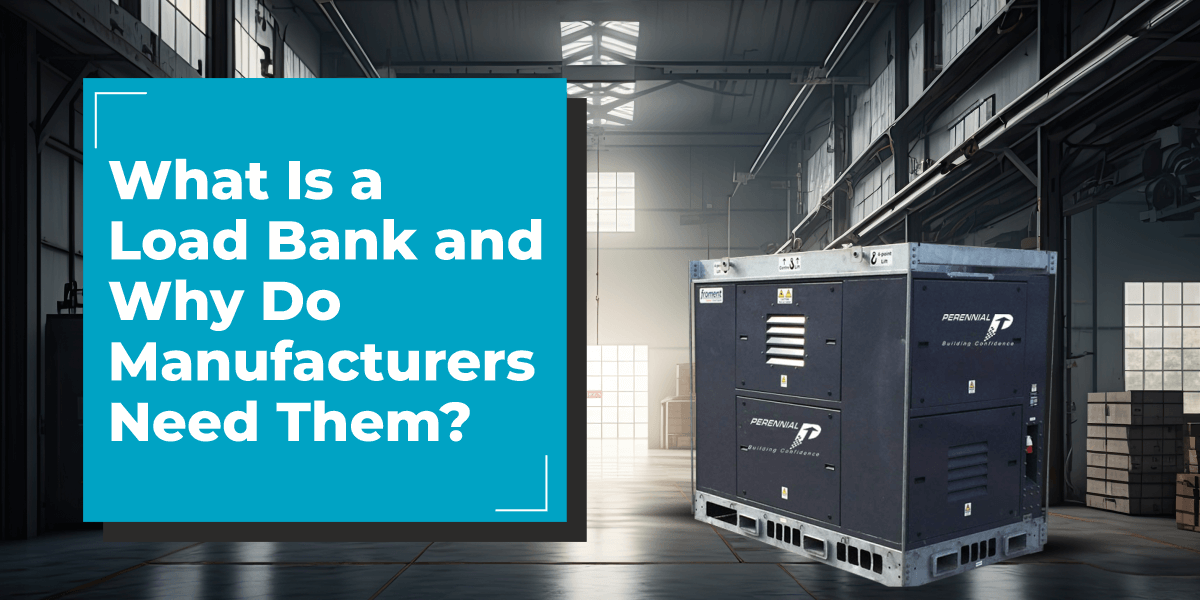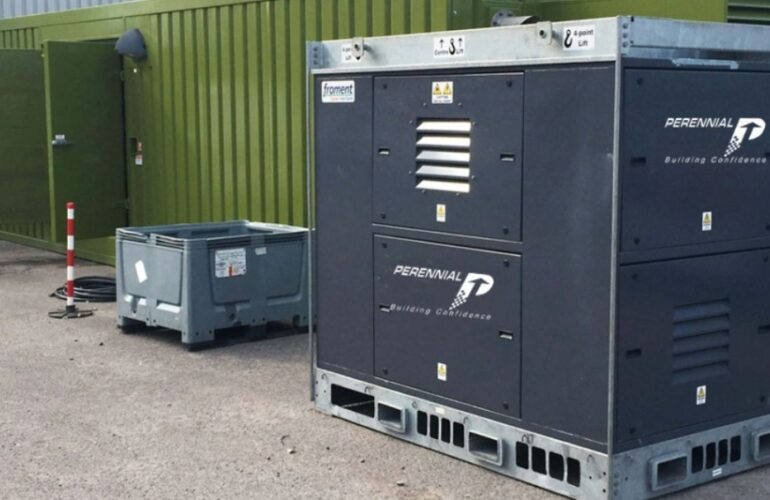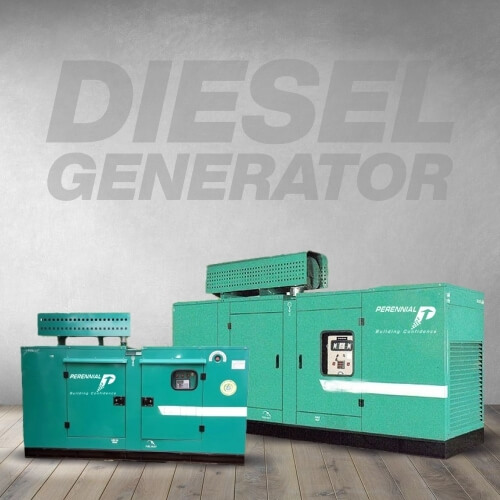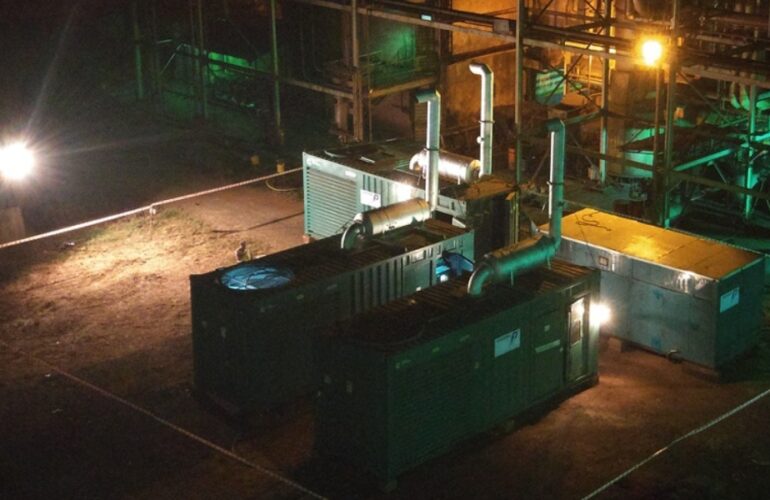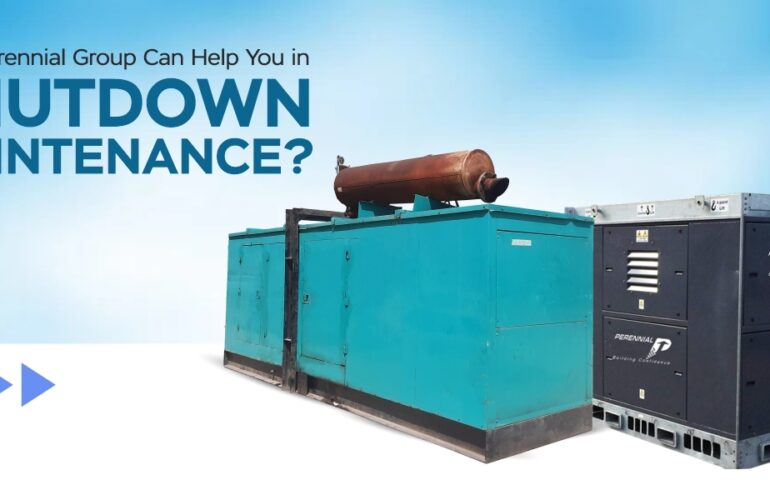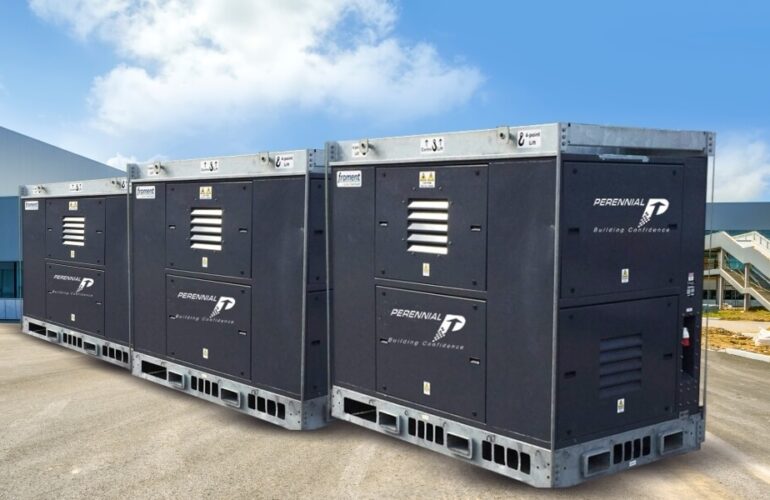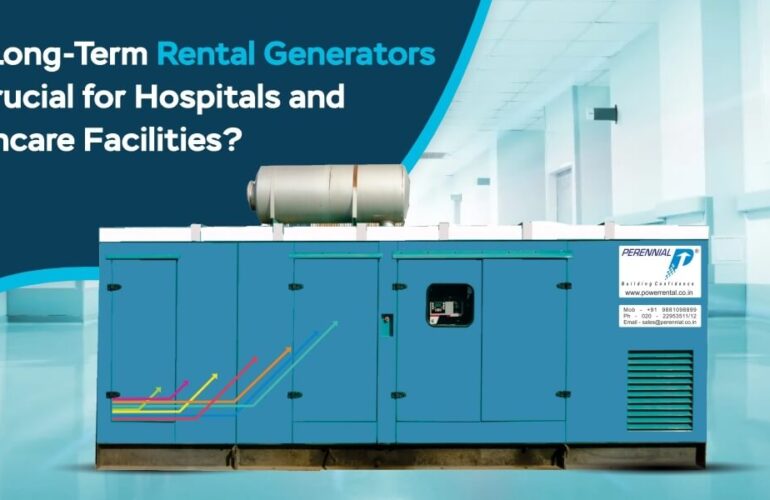What is a Load Bank?
A load bank places an artificial electrical load, to test an electric power source without connecting it to its normal load. During testing, adjustment, or verification procedures, a load bank is connected to the output of a power source in place of its usual load. The power source can be an electric generator, battery, or photovoltaic system.
Load banks duplicate the power load such as the total electricity drawn on a source of power instead of its normal load during everyday operations.
You can find many companies that provide load bank hire options. Perennial Technologies provides a load bank rental option along with a load bank for sale option.
Load banks have a variety of uses, including:-
- Testing and commissioning generators
- Testing other power sources
- Maintenance and troubleshooting of electrical systems
- Training of personnel on electrical equipment
- Research and development of new electrical technologies
- Compliance testing of electrical equipment to standards
Load banks can be either resistive or inductive. Resistive load banks dissipate the electrical energy as heat, while inductive load banks store the electrical energy in a magnetic field.
Load banks can be either portable or fixed. Portable load banks are typically used for testing and commissioning generators and other power sources. Fixed load banks are usually used for maintenance and troubleshooting of electrical systems.
The size and capacity of a load bank will depend on the application. For example, a small portable load bank may be used to test a small generator, while a large fixed load bank may be used to test a large power plant.
Benefits of Load Bank
Load banks are a vital tool for ensuring the reliability and safety of electrical systems.
Here are some of the benefits of using a load bank:-
- It can help to extend the lifespan of electrical equipment by identifying and correcting potential problems before they cause damage.
- It can help to ensure the reliability, safety, and efficiency of electrical systems by ensuring that they can withstand the expected load.
- It can help to reduce the risk of power outages by ensuring that the system has enough capacity to meet the demand.
- With the help of Load banks, data centers test their critical systems before they go live. Due to this, data centers can identify and fix any problems.
- The four main uses of load banks in data centers are as follows:-
- Commissioning
- Maintenance Testing
- Expansion
- Component Replacement
- In case of a failure of the main power supply, UPS systems serve as backup power for the majority of data centers. In between the failure of the main power and the start of backup power, there can be a time gap. UPS systems can bridge this gap. UPS systems have to ensure that service is not interrupted for those few minutes. Load banks test these UPS systems to ensure they are functioning properly.
Similarly, load banks are used on a large scale in various manufacturing industries. Load banks have many applications in the manufacturing sector.
Why Do Manufacturers Need Load Banks?
There can be several reasons why Electrical engineers could wish to mimic a full power load. In general, they are used to test the performance and efficiency of an available power source. More specifically they are used to ensure the proper functioning of an auxiliary power source before an outage hits the primary source.
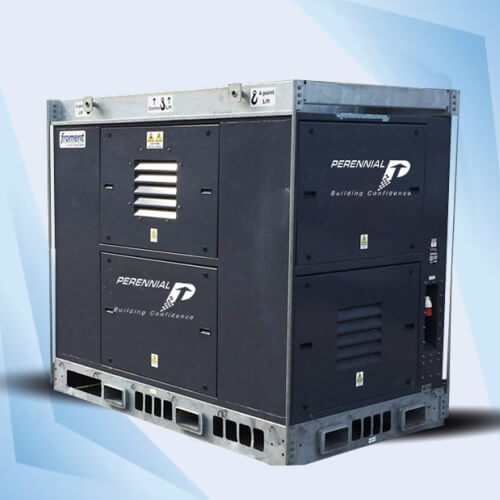
Some of the reasons why manufacturers need load banks are given below:-
- Engine cell testing: To test the performance of the new engines, Manufacturers use load banks. Engineers can fine-tune how the engine functions by using variable mechanical loads and dynamometers to ensure it delivers power efficiently irrespective of the circumstances.
- Generator cell testing: To appraise the stability and resilience of generator power units, standby generator manufacturers use load banks. In such cases, the load bank calibrates the generator to bring its performance in line with tolerances.
- Testing and commissioning of new equipment: When manufacturers develop new equipment, they need to test it under simulated load conditions to ensure that it is capable of meeting the expected demand and that it is operating within its safe operating limits. This is where load banks come in. Load banks can be used to simulate a variety of load conditions, so manufacturers can test their equipment under a variety of scenarios. This helps to ensure that the equipment is reliable and will not fail under normal operating conditions.
- Maintenance and troubleshooting of equipment: Load banks can also be used to troubleshoot problems with existing equipment. By connecting a load bank to the equipment, engineers can identify the source of the problem and make repairs. For example, if a motor is overheating, engineers can connect a load bank to the motor and increase the load until the motor overheats. This will help them to identify the problem and make the necessary repairs.
- Training of personnel: Load banks can also be used to train personnel on the safe operation of electrical equipment. By simulating real-world conditions, load banks can help to ensure that personnel are properly trained to handle any potential problems. For example, a manufacturer of electric motors might use a load bank to train their technicians on how to safely start and stop motors.
- Research and development: Load banks can also be used to research and develop new electrical technologies. By simulating different load conditions, engineers can test the performance of new technologies and identify any potential problems. For example, a manufacturer of solar panels might use a load bank to test the performance of their solar panels under different weather conditions.
- Compliance testing: Load banks can also be used to test electrical equipment to ensure that it meets regulatory requirements. This is important for manufacturers who need to sell their equipment in different countries. For example, a manufacturer of power supplies might need to test their products to meet the requirements of the IEC 62368-1 standard.
Overall, load banks are an essential tool for manufacturers who want to ensure the safety, reliability, and efficiency of their electrical systems. By using load banks, manufacturers can help avoid costly repairs and downtime and ensure that their products meet the needs of their customers.
As you can see, load banks are a versatile tool that can be used by manufacturers in a variety of ways. They can test not only battery systems and wind generators but also aircraft or watercraft generators and massive engine generator sets.
Perennial Technologies provides both options to its customers, load bank rental as well as load bank for sale! We provide 10 KW, 100 kVA, 500 kVA, 1650 kVA, and 2 Megawatt power resistive and inductive load banks. You can buy load bank from us!

